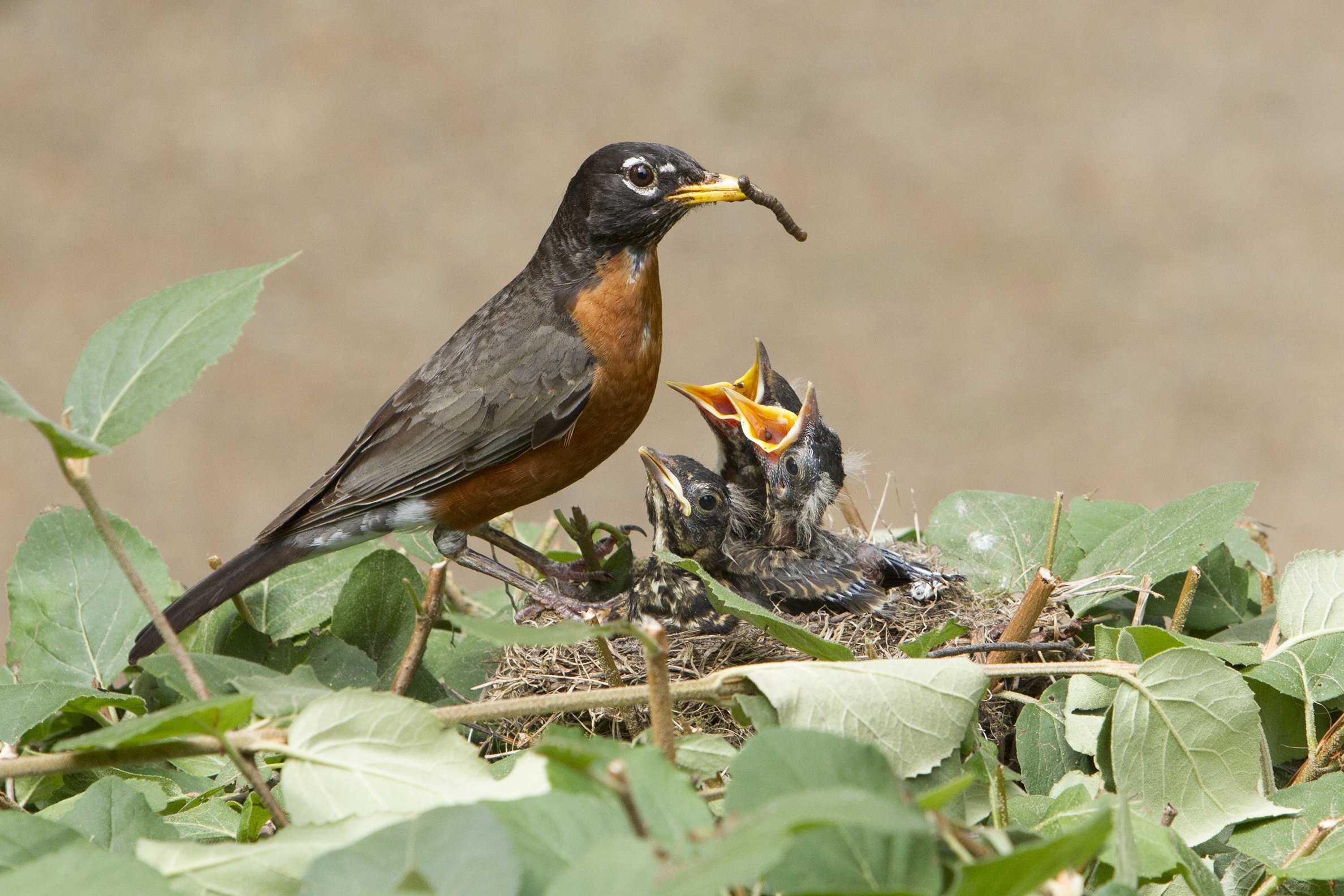A liquid song echoes whole through springtime woods. At dawn, midday, or dusk the bird might sing, but its song delivers an energy and briskness in those crepuscular hours as the sun rises and sets. Cheerio, cheerio, cheerio. So it goes for the American Robin, Wisconsin’s state bird even though it should be the Golden-winged Warbler or Ovenbird, we’ll get to that later (we won’t).
An adult robin feeds a worm to nestlings (photo by Sandy Spicknall/Audubon Photography Awards).
Exclusively a North American bird, the American Robin actually breeds as far north as the tundra of Canada and Alaska and as far south as central Mexico. With such a wide range across the continent, the robin is an opportunistic feeder at most times. Composing the largest land bird population in North America, the estimated 370 million robins find feasts from Alaskan biomes to the high elevation forests in Mexico.
But what exactly makes up those feasts? For American Robins in Wisconsin, we all have the image of a bouncy bird plucking an earthworm out of the ground. From about March through July robins feast on those earthworms, caterpillars, and a wide variety of other invertebrates, sampling delicacies from 107 different insect families, according to one study. However, as those May flowers—of roses, dogwoods, raspberries, sumacs, and grapes—turn into summer and fall berries, robins shift to a fruit-forward diet that lasts through winter. By October upwards of 90% of their diet consists of fruit.
We witness this phenomenal fruit plundering at Faville Grove as huge flocks of robins plunder the swamps around Faville Grove during November and December. Dense stands of winterberry decorate these lowland areas, and the streams of robins take full advantage of the abundant crop. You can see a nice video of robins consuming winterberries below.
American Robins consume bright red winterberries.
It’s thought that the birds wait for a few frosts to take hold, when the winterberries concentrate their sugar content and lose some bitterness, much like the production of sweet ice wine. However, these berries apparently become highly acidic, so the robins likely need complementary sources of protein so they aren’t catabolizing muscle mass to buffer against acidity. You can see in the graph below how much Aquifoliaceae (the holly family, which includes our native winterberry Ilex verticillata) makes up the robin’s diet from November to February. The robin’s diet is a complex dance of biogeography, physiology, and opportunity.
The above graph shows a breakdown of fruits (by plant families) consumed by robins (Wheelwright, 715).
You can find large flocks of robins throughout Faville Grove today. On snow-covered spring days they often concentrate along roads, where plows have scraped up bare dirt, but few things can beat listening to a robin sing in the early morning to a grove of trees following a fresh rainfall overnight, like the sweet songs I heard this morning. State bird or not, you can’t help but be fond of a springtime robin.
References
Nathaniel T. Wheelwright, The Diet of American Robins: An Analysis of U.S. Biological Survey Records, The Auk, Volume 103, Issue 4, October 1986, Pages 710–725, https://doi.org/10.1093/auk/103.4.710
Written by Drew Harry, Faville Grove Sanctuary land steward
Cover image: An American Robin with a bright red chest and gray plumage uses their yellow bill to take sips of water from a pool (photo by Robert Groos/Audubon Photography Awards).







